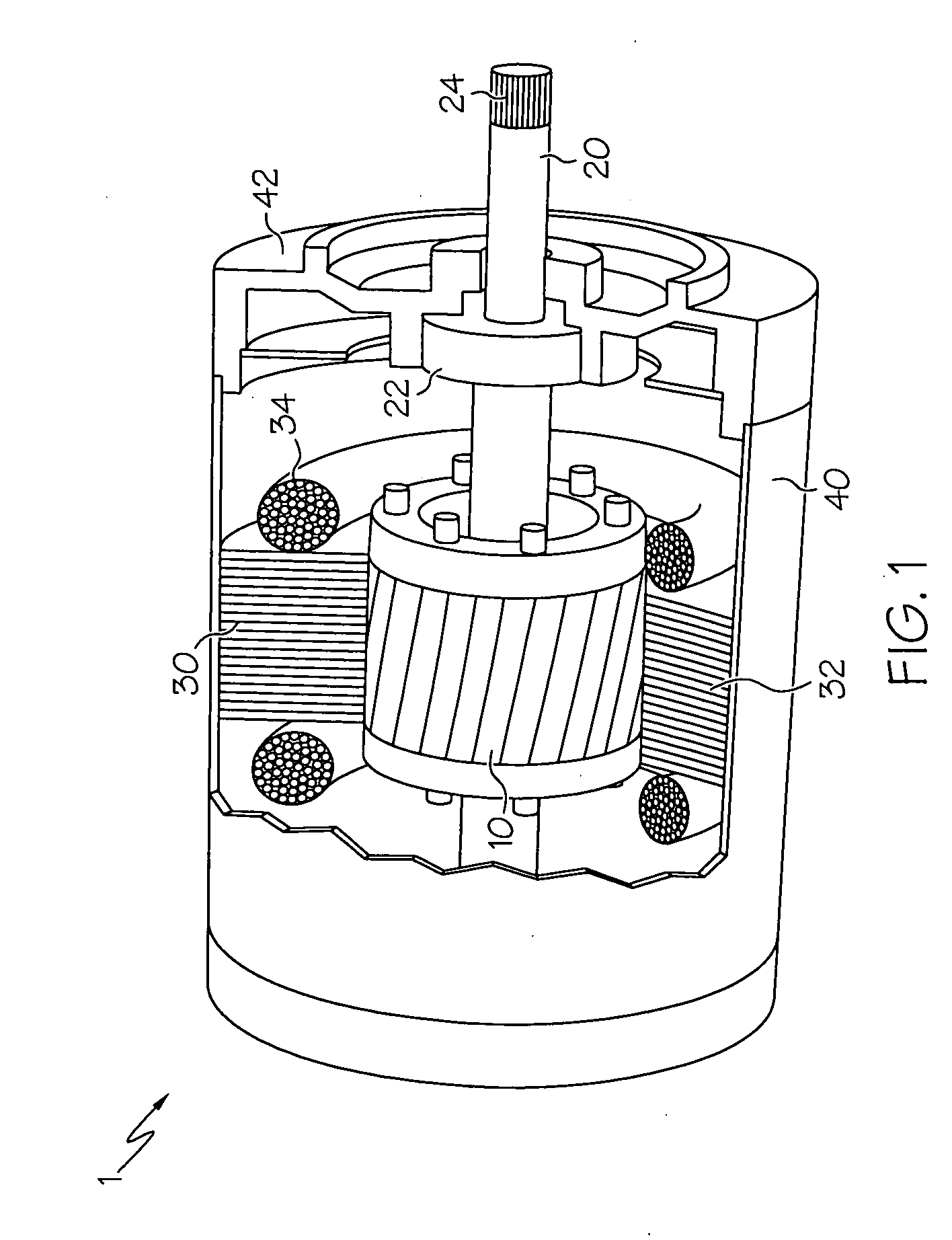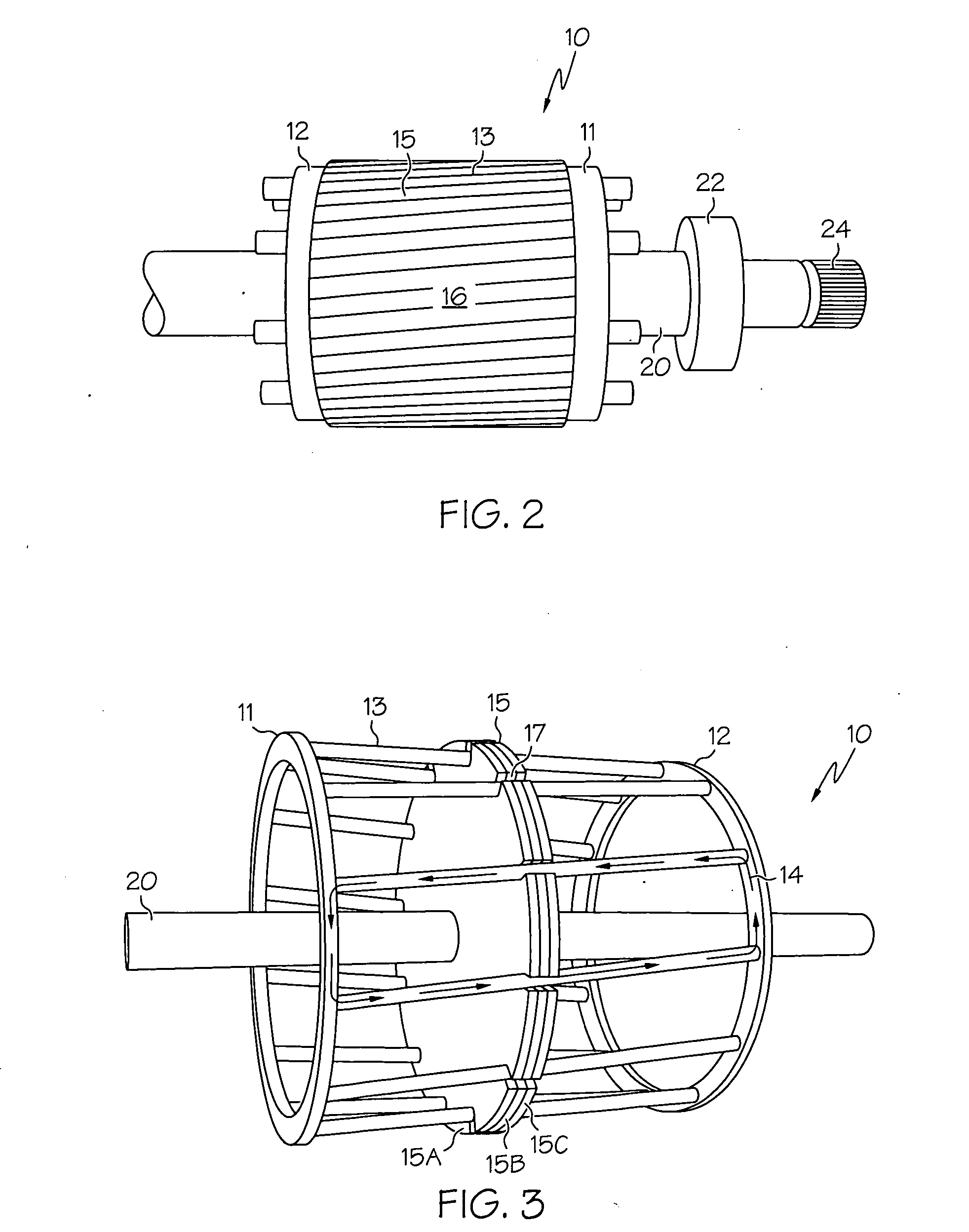Pressure casting of electric rotors
a technology of electric rotors and pressure casting, which is applied in the direction of synchronous motors, foundry patterns, foundry moulding apparatuses, etc., can solve the problems related gas entrapment in the relatively in the end rings, and in the relative long but narrow passages. , the squirrel cage rotor casting is either difficult to achieve, and the effect of high molten flow turbulen
- Summary
- Abstract
- Description
- Claims
- Application Information
AI Technical Summary
Benefits of technology
Problems solved by technology
Method used
Image
Examples
Embodiment Construction
[0027]Referring initially to FIG. 1, an electric motor 1 is shown, where a rotor 10 spins in response to changes in a magnetic field from stator 30. Rotor 10 is mounted on a shaft or mandrel 20 so that the spinning motion of the rotor 10 can be turned into useful work. For example, teeth 24 formed in the end of shaft 20 can be used to interact with a complementary surface to turn a wheel, pulley, fan or the like. Motor 1, in the configuration shown where the rotor 10 and stator 30 are not in contact with one another, is referred to as an induction motor, where the principles of reciprocal induction of electric current and magnetic flux in appropriately-configured structures is well-known. A housing 40 is used to contain the rotor 10 and stator 30, while the rotatable shaft 20 may be secured to the housing 40 via one or more bearings 22 that could interact with an end plate 42 that is formed with or otherwise secured to the housing 40. As can be seen, stator 30 includes a magneticall...
PUM
| Property | Measurement | Unit |
|---|---|---|
| Temperature | aaaaa | aaaaa |
| Temperature | aaaaa | aaaaa |
| Temperature | aaaaa | aaaaa |
Abstract
Description
Claims
Application Information
 Login to View More
Login to View More - R&D
- Intellectual Property
- Life Sciences
- Materials
- Tech Scout
- Unparalleled Data Quality
- Higher Quality Content
- 60% Fewer Hallucinations
Browse by: Latest US Patents, China's latest patents, Technical Efficacy Thesaurus, Application Domain, Technology Topic, Popular Technical Reports.
© 2025 PatSnap. All rights reserved.Legal|Privacy policy|Modern Slavery Act Transparency Statement|Sitemap|About US| Contact US: help@patsnap.com



